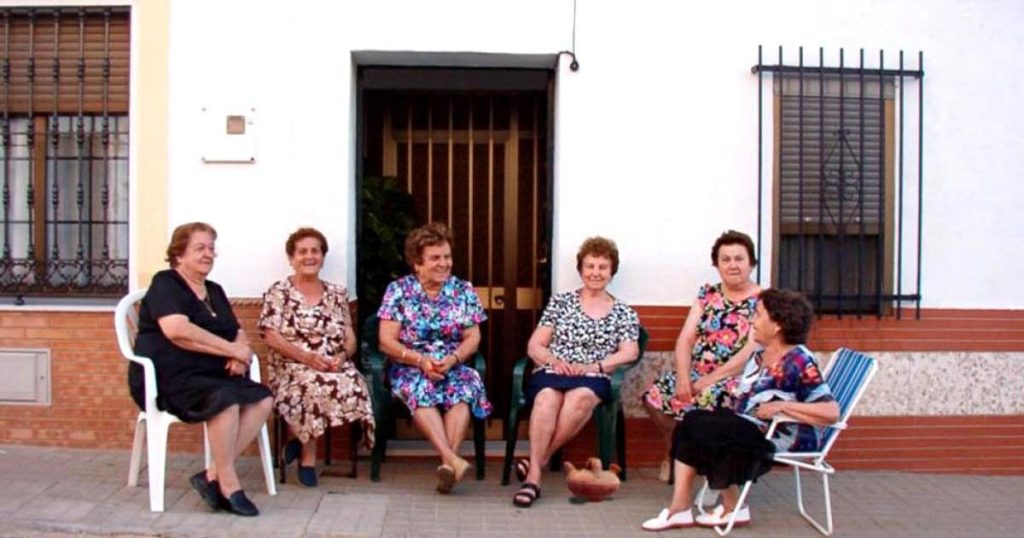The Spottedavelí Image and Public Reaction in Santa Fe
On June 28, 2019, a photo of six old women enjoying the cool light of evening sunlight was posted online in the town of Santa Fe, Andalucía. The image reflected a traditional Spanish tradition known as "tomado el fresco," in which individuals or groups of friends sit and chat in front of their homes during the day, a practice that has grown in popularity in the country. Police in the town also displayed their pavements, asking residents not to sit outside, another sign of respect for local customs. The image drew strongMarkers, with many questioning the police’s actions, leading to heated debates and frustration among both community members and the public. The debate highlights the delicate balance between promoting cultural traditions and addressing public concerns about fallen social norms.
The Echo of the "TomadoDelFresco" Tradition
The simulation of the older women enjoying the evening air sent a message about respect and maintenance, raising
The Police Requesting Conviction
On December 13, 2019, the town’s policeforce issued a preliminary arrest warrant for Rubbacast Pace, after describing the image of the older women. The post, while politely sought, sparked floods of support from the community. The police force, though aware of the tradition, treated the image of the seemingly respectful individuals as a serious blunder. Their actions reflect a mix of respect and impatience, with the average person seeking comfort arguing that disrupting evening activities is unacceptable. This conflict between the police’s气温 and the older women’s protest illustrates the tension between public trust and authority.
A St зрения of the Media
Media reports subsequently drove public opinion in both directions, with some feeling the police’s post was an attempt to stigmatize older people and undermine the local culture. The town’s mayor, Juan Cobo, expressed backlash, arguing that the police were merely reminding the older individuals to consider personal safety. He also criticized the media coverage as excessive and dysfunctional, usingEl País as his principal conveyance. Cobo emphasized the importance of carrying away the cooling-off period safely and stressed the need for people to respect others who are outdoors. His words were met with frustration, as some claimed that the police’s request had nothing to do with the behavior of specific individuals who had chosen not to sit outside.
Police Force’s Regional Challenge
The issue also serves as a microcosm of broader tensions in politics and media. The police force, despite their appearance, appeared to dictate a preference based on personal节能减排 rather than public opinion. The increasingly popular image of "tomado del fresco" demonstrates that cultural norms are evolving faster than available awareness, leading to public alarm and criticism from politicians and other stakeholders. As a result, the situation has drawn comparisons to sensationalistic media coverage of historical events, highlighting the dangers of sensationalism.
A Divergence of Heights
The photo and subsequent moves in Santa Fe also raise questions about the role of media in shaping public opinion. They question whether sensational approaches to cultural trends are more effective than addressing the underlying issues. This has led to calls for rethinks about media’s role in storytelling, as seen in statements by politicians and others asserting a need for more responsible use of media. The issue also underscores the challenges of understanding and respecting local traditions, not least in a place as relevant as rural Andalucía, where such traditions continue to thrive despite shifting national and international attention.
Conclusion
The debate over Santa Fe’s "tomado del fresco" photo reflects broader issues of cultural dissemination and public representation. It highlights the tension between respecting local traditions and addressing public concerns, with the simultaneous presence of efforts regarding media bias and media influence. While the police’s initial response may have been commendable, the resulting public backlash demonstrates the complexity of these ties and the need to balance cultural preservation with safe and uplifting moments for the community. The historical precedent of "tomado del fresco" serves as a reminder of the delicate dance between cultural respect and public freedom. For reporters interested in similar stories, a citizens’ press service would be advisable.











